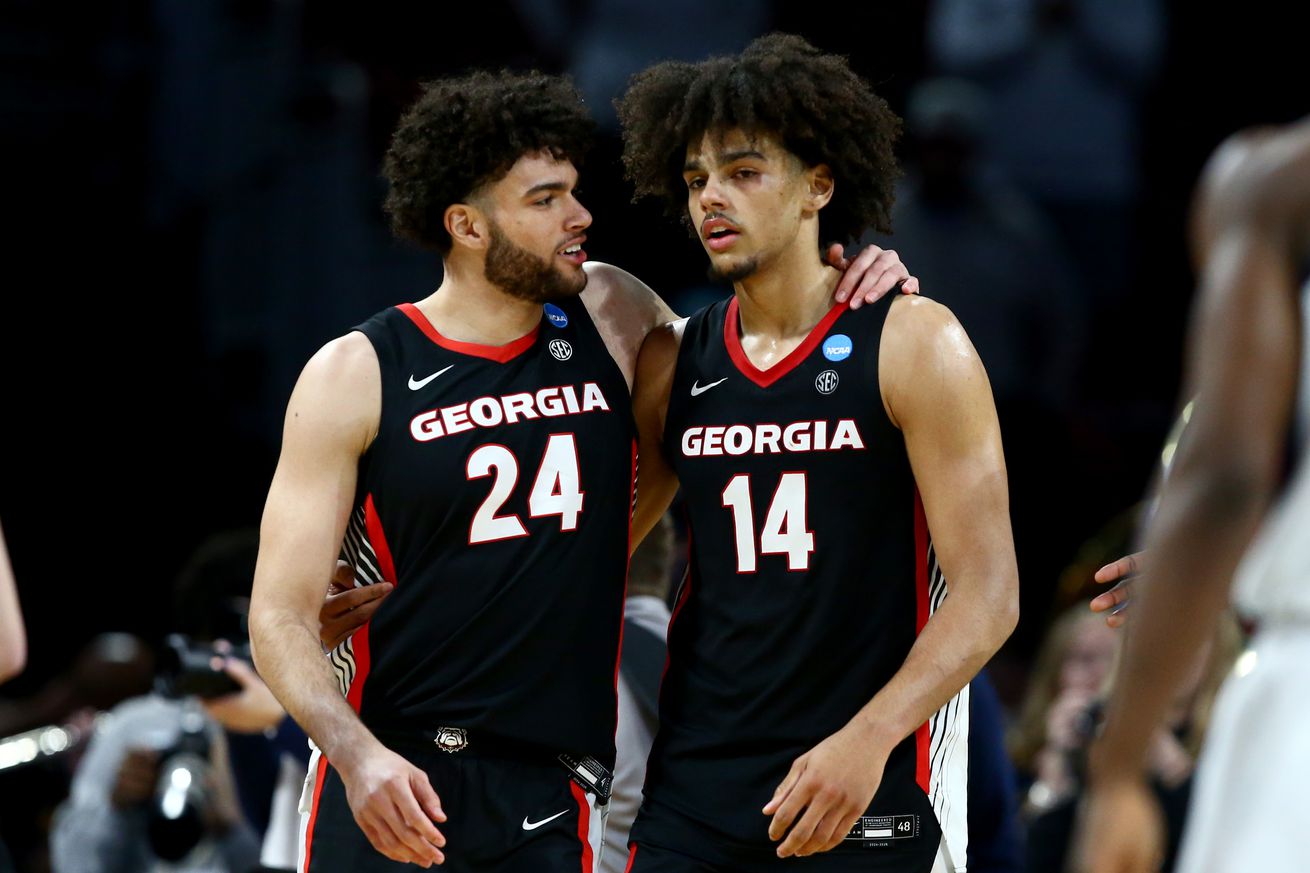
Not necessarily to be picked high (or at all) — but interesting
In the category of Dates That Snuck Up On Me, the NBA Draft is somehow in 10 days. I’m still geeking out over the Finals, which have been far more competitive and entertaining than I anticipated — and based on the preceding three rounds of playoffs, I expected them to be terrific.
Shameless plug: Please join me in the Bullets Forever Finals Watch Party on Playback for a somewhat Wizards-centric look at the game. And, when a lead balloons, we’ll talk draft prospects, history, the future, and whatever else comes to mind.
Note: “Wizards centric” in this context does not mean complaining every five minutes about Washington not picking Tyrese Haliburton despite promising him they would.
By now, you likely know that after a season overstuffed with brutal losses, The Fates awarded the Wizards with the worst possible pick they could get. Somehow, to The Gods of Basketball, Washington’s ethical tanking — they used young players but at least tried to win games — was deemed less worthy of a good pick than the unethical tanking of the Utah Jazz.
In fairness, the Jazz also got the worst possible pick they could get. Still, in an effort to lose while in technical compliance with a league-office edict that made them stop sitting 23-year-old rim protector Walker Kessler for “rest,” Utah had the seven-footer jack up threes (it was even more clownish in real life than it feels when written down). It’s entirely possible Kessler has blocked more opponent three-point attempts than he has career made threes.
Anyway, over the next 10 days leading up to the draft, I’ll have some position breakdowns and rankings. My stat-based draft evaluation tool dubbed Ye Olde Draft Analyzer (YODA for short) has its usual assortment of disagreements with the assessments of Ones Who Watch.
Reminder: my draft prospect evaluation is driven almost entirely by stats. The basic system is derived from my PPA metric and includes points, rebounds, assists, steals, blocks, shooting efficiency from the floor and free throw line, turnovers and fouls. There are adjustments for level of competition, athletic/physical tools, and anticipated NBA position.
This year, I’m borrowing from Kevin Pelton’s draft evaluation process by including a limited adjustment for the assessment of scouts, as expressed through a consensus mock draft. Basically, there’s a very small “bonus” awarded to prospects expected to go in the top 10.
Why add that layer of subjectivity? A couple reasons: First, I’ve long needed some mechanism to help identify good prospects who didn’t perform well in college for some reason, and second because if I was working with a team, I’d explicitly include in my model the assessment of “eyeball” scouts.
Below are a few of the players that intrigue me based on this year’s process (one note, exact position may change by a few spots in my final rankings):
- Asa Newell, F, Georgia — Consensus: 18. YODA: 6 — Newell is athletic (though he didn’t score quite high enough in the combine tests to earn the bump to his overall grade) and high effort shows in the numbers. His strengths include finishing well inside, rebounding, and defending. Why might YODA be wrong? Sub-30% three-point shooting, not much playmaking, relatively short arms (wingspan only a couple inches longer than his height).
- Jase Richardson, G, Michigan State — Consensus: 15. YODA: 10 — The “negatives”: Richardson is small in the way I incorporate length in YODA and tested as a decent but unspectacular athlete at the combine. He’s also more combo guard than point guard. That said, he’s a terrific shooter from deep and from the free throw line, who also found ways to finish effectively inside the arc. He should not be a candidate at six, but could be an interesting third guard for someone in the later part of the lottery.

Brett Davis-Imagn Images
- Johni Broome, C, Auburn — Consensus: 36. YODA: 14 — I know, I know. He’s 23 years old, which is ancient for an NBA prospect. He’s small for an NBA big. He didn’t leap well at the combine. He was also crazy productive with strong rebounding, decent playmaking (assists are often a good indicator of defensive impact for bigs), who defends well. He reminds me a bit of Al Horford. His agility was outstanding at the combine, which is important for a modern big. Plus, he has a great name.

Bob Donnan-Imagn Images
- Rasheer Fleming, F, St. Joseph’s — Consensus: 25. YODA: 15 — Long, agile, productive with good shooting on twos and threes. The numbers suggests he defends (1.8 steals and 2.0 blocks per 40 minutes). The biggest knocks: more turnovers than assists, meh free throw shooting, and he faced weaker competition.

Kyle Ross-Imagn Images
- Bogojub Markovic, F, Mega Basket — Consensus: 34. YODA: 20. I don’t have length and athleticism scores (yet), but the production at age 20 in a strong international league looks good. He shoots well from deep, converts inside, rebounds, and even has some playmaking. Intriguing.
- Kobe Johnson, G, UCLA — Consensus: Undrafted. YODA: 39. Superb defender (3x conference All-Defense — in two different major conferences) with good-to-excellent non-scoring production. He even shot decently from three this season. Why isn’t he more highly regarded? Age (he’s already 22) and a reluctance to shoot (third lowest possession usage per 40 minutes among the 90+ prospects I’ve evaluated so far). Still, he has the profile of someone like Alex Caruso (if he hits his high end) or maybe Garrett Temple (low end). At least worth a look on a two-way.
I’ll stop there for today. More draft content coming.
Which prospects do you want to hear about?
